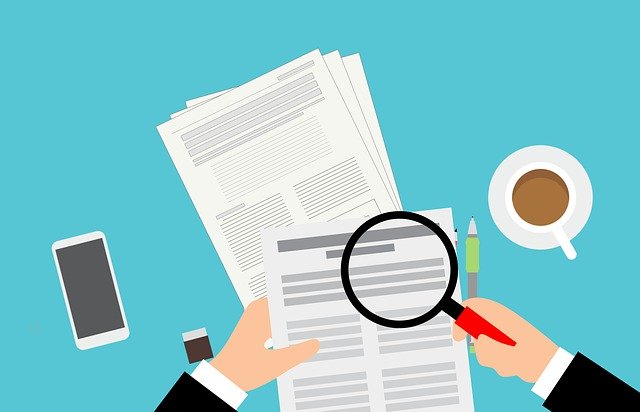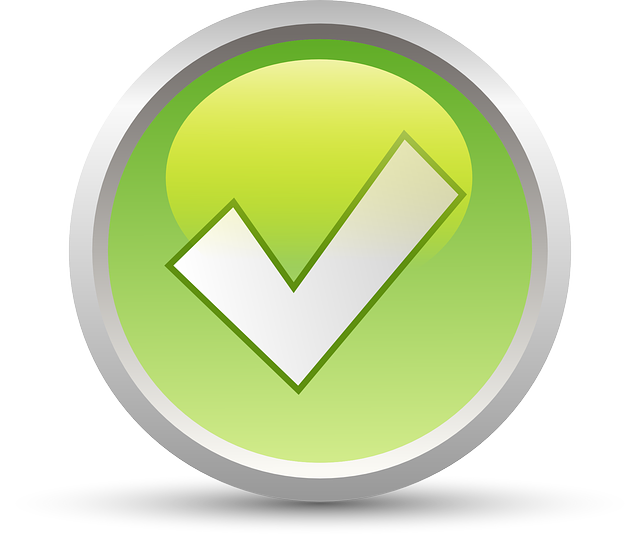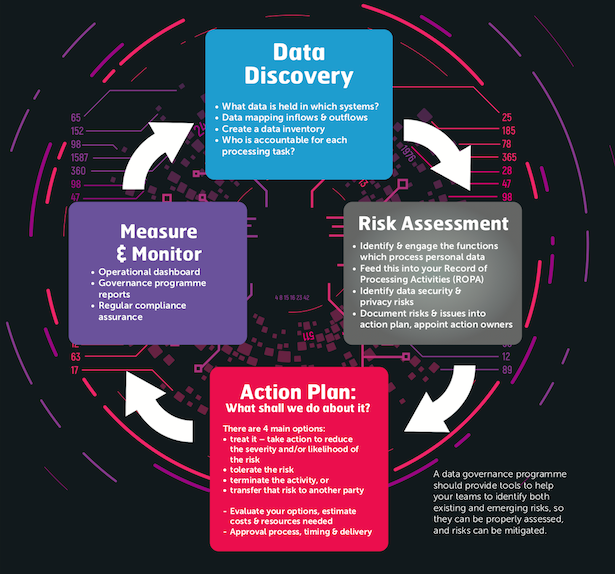We all know about the importance of clean, accurate and all-round dependable data for great marketing. But how many of us actually achieve it? In this article we outline the actions required to ensure you have reliable data.
This article first featured in a report produced by the GMA in collaboration with data insights specialists REaD Group. Access the full report: Addicted to bad data? Get clean and stay clean.
Data’s full value can only be unleashed if it is accurate, up-to-date and legally compliant. It lays the foundation for increased business efficiency and productivity, improved marketing efforts and greater ROI across the business.
A worrying number of studies show that organisations have been failing to wrest control of their data. Research by IBM revealed that 27% of business leaders were unsure how much of the data they used was accurate. Bad data has been said to cost the US economy roughly £2.3 trillion dollars each year, according to the same report.
While the stakes may be higher for multi-national corporations, having the right processes in place to ensure data remains accurate and updated is of increasing importance to SMEs too.
Data protection regulations do not discriminate, and the value of quality data can help businesses of all sizes make better decisions and ultimately achieve better results.
How to clean data in 7 steps
1. Begin with an audit
 The first step is to discover the current state of your data across the whole organisation. In auditing your data, you should:
The first step is to discover the current state of your data across the whole organisation. In auditing your data, you should:
- Assess data inputs: Can you cope with the amount of data you’re gathering? Are your data inputs actually helping the business or simply creating more noise? Prioritise the data sets that are useful and manageable – and jettison the rest. This enables you to focus your data cleaning on the areas that actually matter, rather than wasting resources on data inputs which offer little value.
- Assess data hygiene: Now that you’ve identified the most important data inputs, you need to check if they’re clean. Is the data correct? Is it representative? Data hygiene must be assessed across the whole organisation.
- Evaluate business-wide: Check all systems that your company relies on for in-house customer information. This includes all platforms which gather information about customers, including: CRM, web analytics, registration forms and survey forms.
- Update the audit: Perform audits regularly. Frequency will depend upon the size and scale of your organisation as well as your specific data needs.
2. Set clear goals
 Effective data cleaning requires a set of agreed KPIs. For example, you could aim to clean a set number of contacts in a given month. Data cleansing tools can automate this process or individual team members can be given specific targets, such as removing or unifying a set number of duplicate contacts each month.
Effective data cleaning requires a set of agreed KPIs. For example, you could aim to clean a set number of contacts in a given month. Data cleansing tools can automate this process or individual team members can be given specific targets, such as removing or unifying a set number of duplicate contacts each month.
KPIs can also be linked to your wider business goals. For example, by having more accurate data your sales team will hold more accurate information about potential leads. They will also be more efficient and productive (i.e. they won’t be chasing duplicate contacts); all of which makes the sales team more capable of driving a higher number of sales conversions.
3. Collect the right data, the smart way
 Standardising contacts at point of entry will save a lot of time and effort in the long run. By creating a single, consistent method for importing data into your system, you can avoid messy contact forms and/or the creation of duplicate contacts for the same individual. This requires intelligent filtering.
Standardising contacts at point of entry will save a lot of time and effort in the long run. By creating a single, consistent method for importing data into your system, you can avoid messy contact forms and/or the creation of duplicate contacts for the same individual. This requires intelligent filtering.
For example, when someone enters information on a form (whether a customer or employee) a process can be put in place to ensure that erroneous values are not entered in the first instance and duplicates are harder to create. Ultimately, standardisation minimises the risk of gathering bad data.
Want more action-ready marketing insights straight to your inbox? Sign up to our newsletter here.
4. Integrate data cross-team and cross-platform
 Platforms
Platforms
Every organisation utilises a range of platforms, such as: CRM, mobile app & web analytics, marketing automation and social media among others. Wherever possible, these platforms need to be integrated: systems need to speak to each other so that when a customer’s details are updated in one system, it’s automatically updated in another.
Or, in the case of tracking user journeys, a prospective customer can be accurately tracked and mapped across multiple devices giving a holistic view of their behaviours. REaD’s Single Customer View (SCV) solution is an example of technology which maps and unifies what would otherwise be disparate user journeys while ensuring data is cleansed in the process.
People
Ensure clear ownership of data across the organisation. In each area of the business where data is collected an individual should be entrusted with maintaining the data and ensuring it stays clean. These people are responsible and accountable for making sure any data collected is purposeful and accurate. Good data hygiene requires leadership across the business.
“Without a systematic way to start and keep data clean, bad data will happen.”
Donato Diorio, CEO at DataZ.
5. Be a responsible data handler
Clean data also needs to be responsibly sourced data. Arguably, it’s good business practice to ensure that customer data is collected in a transparent way that respects individual’s privacy, but it is also a legal requirement in light of GDPR. Consequently, a risk-assessment process needs to be in place. Simon Blanchard, Deputy Chair at the Data Protection Network, lays out four key areas to consider as part of a risk assessment:

The ‘measuring and monitoring’ process can be assisted by automated tools which can automatically highlight data which is held too long or is inaccurate. It helps ensure that data cleansing is not a one-off event but part of an ongoing data risk assessment to protect themselves and safeguard individual’s data.
6. Validate and enhance your data
Data’s value is dependent on its quality. If it’s accurate, detailed and representative; it can be relied upon to help inform decision-making across all areas of the business. If it’s inaccurate, then it’s likely to mislead and contribute to poor decisions. Data hygiene tools can help.
The accuracy of data can be verified manually or via automative tools. For the sakes of speed, accuracy and cost; it’s worth investing in systems that automatically enrich, append, clean and/or de-duplicate data. In the absence of this technology, ensure there is a clear timeframe/schedule for data cleaning and enhancement activities.
Data aggregation:
Ensure that all the aggregated data you have about customers, leads and contacts is up-to-date. Prioritise existing customers before moving on to leads – as these provide the most value to the business.
Data enrichment:
This is the process of merging third-party data with your existing database of customer data to create a more detailed – or holistic – picture. This will also give you a true understanding of the customer, their spend, transactions, etc. Remember: the data gathered needs to meet regulatory requirements and respect the individual’s right to privacy.
De-duplication:
Describes the process of ensuring that duplicate copies of the same information are deleted within your database. As well as potentially saving calls/emails/letters to the same contact (and the time that costs both parties), duplicate datasets can run-up a significant cost in bandwidth and storage – up to 80% according to a data de-duplication whitepaper by Druva.
7. Make the data talk
 Finally, you need to make sure that data is distributed in such a way that every individual can make sense of it. The more people that can access and understand data, the more it will empower each individual and team, and the greater the stake they will have in the data cleansing process. Data visualisation tools can play an important role in establishing and maintaining a healthy data culture across the business.
Finally, you need to make sure that data is distributed in such a way that every individual can make sense of it. The more people that can access and understand data, the more it will empower each individual and team, and the greater the stake they will have in the data cleansing process. Data visualisation tools can play an important role in establishing and maintaining a healthy data culture across the business.
45% of data leaders cite a lack of data visualisation as a barrier to achieving
business goals.
Auto-validation: A Macmillan Group case study
As a cancer charity, Macmillan requires accurate databases in order to contact those in need of its services. But also to ensure communications are not directed to the wrong people. Using REaD Group’s automated bespoke data cleaning service, Inline, every campaign data selection taken from Macmillan’s database was evaluated for accuracy of contact details – in terms of deceased, gone-aways and, where available, new addresses for relocations. This not only ensured that their data was accurate and up-to date but also allowed them to set some challenging, high value objectives for the future.
Summary
Any business serious about being data-driven (at least, in the right direction) needs to ensure their data is truly dependable. The first step is to perform an audit, as outlined above, as this will highlight the areas of most concern and provide the basis for setting a realistic timetable of cleaning which tackles the most urgent problems first.
As with any cleaning task, it’s never a one-time job, so make sure it is scheduled as a regular task, either every six months or yearly. Keep on top of it and your marketing is sure to reap the results.
Sign up to our newsletter for more action-ready marketing insights and best practice tips.
Title image by Pexels from Pixabay











Leave your thoughts